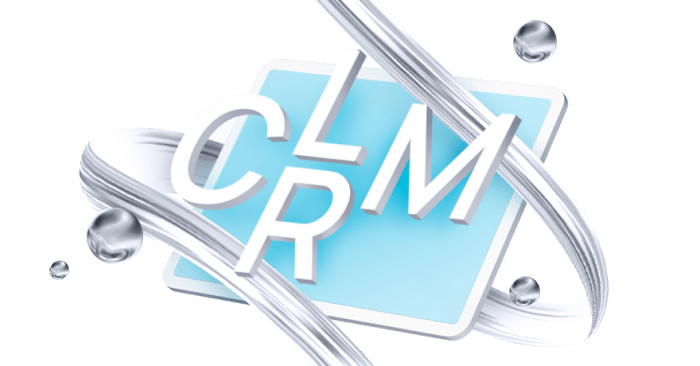Guide to Digital Content Creation in Pharma
Research shows that people spend around 400 minutes online every day1, browsing social media, reading texts, watching videos, listening to podcasts. Strictly speaking, content is what draws people to this digital world.
Both doctors and patients have embraced this shift. Unsurprisingly, the Internet has become a conventional advertising platform for life science companies.
As we navigate the digital transformation, inching closer to the metaverse, digital content creation becomes an irrevocable part of routine business operations. How to optimize this process, make creating content cost-effective and still produce memorable and impactful process?
In this guide, we will delve into various types of digital content and the production process, from simply writing a text to creating a video series or a podcast. We will pay special attention to regulatory aspects of content creation in pharmaceutical industry and to the emerging trends in AI-assisted applications.
What is digital content creation?
Digital content creation is a multifaceted term that lacks a unified definition. On one hand, it can refer to the very act of creating content — whether it's penning down an article, capturing video footage, recording an audio, or building a diagram. However, it's not just about individual creativity or spontaneity. Content creation can be both a spontaneous act sparkled by inspiration or a carefully planned business process based on a marketing strategy. For the latter, digital content creation is defined as a comprehensive multistage process that requires the collaboration of a cross-functional team, including marketing specialists, SEO, writers, designers and others. Whether spontaneous or planned, the end goal remains the same: to craft compelling content that resonates with the intended audience.
Which content is produced for the digital world?
- Carousel
- Infographics
- Data story
- Brand ambassador
- Quiz
- Survey
- Chatbot
- Online event
- Tutorial
- Podcast
- Blog post
- Social media post
- Website article
- White paper
- eBook
- Checklist
- Template
Why pay so much attention to digital content creation?
As mentioned above, creating digital content for a business is far more intricate than simply producing random content pieces. The challenge lies in crafting content that not only resonates with your target audience but also aligns with your overarching goals.
The significance of the digital content creation process cannot be overstated. Adopting the correct approach and establishing a streamlined workflow enables the generation of high-calibre content that not only communicates your ideas and promotes your products but also establishes a firm foundation for your brand in the digital landscape.
According to HubSpot2, today many companies find themselves juggling the pursuit of short-term growth in the current economic conditions while also investing in long-term brand marketing. Activities spanning from content marketing and social media campaigns to podcasts and webinars help forge a meaningful connection between audiences and brand ethos. A well-conceived content strategy paves the way for not only achieving immediate growth but also for building lasting brand equity in the market.
The digital content creation process
The produced content should align with marketing strategy and help promote your business. It should help increase brand awareness, loyalty, and visibility, build trust. This is why content creation begins with research and planning. At this step, the team answers the following questions:
- Who is the target audience? For pharmaceutical companies, the basic options are doctors and patients, but these two categories can be differentiated by creating detailed customer portraits. Data generated in CLM cycle usually help to paint realistic portraits.
- Which needs of the customers your content can satisfy? Do they need specific information, have knowledge gaps, or do they simply need to know your product better to make an informed decision? Let’s not forget the entertaining content that helps strengthen bonds between customers and brands.
- Which content format does your TA prefer, how often and through which channels?
- How will this content help sell your products? You should have a view of the customer journey and understand the place of each content piece on this road.
- How will you measure performance of your content? When you’ve answered the previous question, think of the short-term and long-term metrics. For example, email open rates will be a short-term one and number of prescriptions among the physicians that you target with these emails will be a long-term one.
Now, let’s take a look at the whole content creation process.


Complexity of each individual step depends on the scale of the marketing campaign. A life science company might need all the steps and a multifunctional team to promote the content effectively and compliantly (we’ll touch the regulations later). But do not fear. If you set-up or hire a team that knows how to create digital content and establish the processes, your digital content production will go smoothly and translate into consistent results.
Where does AI fit in this process?
The most obvious use would be to generate content. It is called generative AI for a reason, isn’t it? Frankly speaking, this might be your worst choice at this point in time. AI is famous for its ability to ‘hallucinate’ missing pieces of information and introduce errors and distortions that are hard to trace because the text is usually fluent and sounds natural. In-depth research and prompt planning will help improve the input and reduce the volume of revision. The more accurate your input is, the more helpful AI will be. The output might still need extensive editing, though.
Today, realistic potential ways to leverage AI in content creation include:
- Brainstorming: AI can save precious time by generating a list of 10, 20, 30 headlines, topics, metaphors, in less than a minute. Your team can bounce of this list instead of having to generate them from scratch.
- Content enhancement: Improve fluency, coherence, change style of the text, rewrite in plain language, etc. Remember to ensure safe handling of confidential information at this point.
- Content personalization: AI can help tailor your content to the specific segment of your target audience.
- Content repurposing: AI can help transform an article into email, convert an audio script into plain text, and so on.
- Chatbots: Create an interactive experience for your customers.
- Proofreading: AI-powered tools for text correction are more comprehensive that simple spell-checkers and provide added value by improving style and fluency along the way.
- Data Analysis and Insights: AI can quickly analyse user engagement metrics to provide insights on which types of content are resonating with the audience. As with brainstorming, marketing team can use these insights as a starting point during content audit and performance review.
Remember that while AI can be a powerful tool in digital content creation, the human touch remains essential. AI can assist, enhance, and optimize, but human creativity, intuition, and understanding of emotional nuances are irreplaceable in producing truly impactful content.
Now let’s take a closer look at the main steps of the content creation process.
Additional factors to consider during ideation and planning
How to generate content ideas? The digital content is not created just to fill the void. Your content should satisfy the needs of your customers, help them connect with your products, and eventually lead to using or prescribing the products. Bounce of what your team already knows about your customers or conduct a survey to better understand their needs.
Today, realistic potential ways to leverage AI in content creation include:
- Answer a question
- Compare and contrast solutions to a problem
- Teach something
- Collect data and engage with the audience (quizzes and surveys)
- Celebrate wins
What will the design concept be? The right design enhances your messages and helps your audience connect with your products. If your product is innovative or complex, or if you simply want to stand out from the crowd, you might consider inventing virtual brand ambassadors or mascots that will help your audience connect with the brand and guide them along the customer journey. Virtual brand ambassador can be a person or an animal that helps consumers go through all your content and receive all the messages.
(Reading the previous passages might have made you think about real-life brand ambassadors and influencers. We will mention them when we get to content promotion.)
Ideas is not all you need to start. If you aim for high results, you need a strategy behind your content plan. You can base this strategy on SMART goals: Goals that are Specific, Measurable, Attainable, Relevant, and Time-bound. Here is an illustration:
- Specific: We want to increase authority of my brand among rheumatologists in out-patient clinics through email newsletter. Some emails will lead to our website.
- Measurable: We will measure our success by the number of prescriptions next year. For a short-time goal, we will measure the OTR and CRT of the emails.
- Attainable: We have an email base collected by the sales team and a detailed customer profile to start this newsletter.
- Relevant: Rheumatologists appreciate fresh data and prefer to control how they access the content (they can open the email when convenient). Emails will lead to our website with more detailed information.
- Time-bound: We will measure the short-time goals every quarter and the long-term goal on an annual basis.
To better understand your customer, create a buyer persona and follow their journey. For example, this persona can be a doctor that has the relevant clinical need and patient population for your product. Ask your marketing and sales teams to describe the decision-making process and customer engagement along the customer journey. Plan which steps of this journey you target with each content piece.


In the pharmaceutical industry, you also need to think about regulations at the very beginning. The ABPI code of practice by PMCPA in the UK and similar regulatory documents in other countries cover all types of communications between doctors, patients, and pharmaceutical industry and is also applied to other life sciences companies. These limitations and recommendations might affect the types of contents your campaign can include, the images and creative concepts you might use, and wording of your messages.
Content audit
The digital world is not static. It evolves and morphs with the current events and trends. If you publish content pieces on your website or HCP web portal, consider the benefits of regular content audit. Content audit means taking an inventory and looking at content performance in relation to your goals and strategy. You can also look at the conversion rates and make changes to improve them.
Experienced marketers say that it helps increase visitor engagement and improve SEO performance. It also provides insights on how to use the old content effectively and avoid overproduction of unpopular pieces.
Detailed look at specific content types
Let’s go through nuances of creating content of the most popular and effective formats.
1. Blogs
Blog is a great way to attract new potential clients, to increase loyalty and trust. It is also quite flexible and can cover study reviews, stories, interviews, news digests, product reviews, comparisons, and so on.
One important thing to remember about keeping a blog is that you need to gain traffic somehow for your posts to be seen. Customers can find your blog through your social media and email newsletters or in search engines. Some companies employ both options, some rely mostly on SEO.
Interestingly, sharing blog posts on social media can help you fill in the social media content plan and increase your credibility by sharing useful articles. You can save resources and increase content performance by cross-posting. This is why strategy is important from the very beginning.
2. Visual content
Despite being popular, video format can seem overwhelming and requiring larger efforts than text. Nevertheless, with standardized design and templates, you can produce videos that present recent studies, animate complex ideas about how your product works, or product demos. You can also turn a blog post into a video or record a video interview and share it in text format later to make it more cost-effective. Video content is also a great way to present tutorials (how to administer a drug product, how to select the right patient, etc.) and can immensely increase patient engagement.
3. Infographics and images
Graphics are irreplaceable in life sciences. Brands often need to explain complex ideas, mechanisms of action, present data that are digested better in the format of storytelling and infographics. Long articles engage the readers better if diluted with infographics and images. From the cost-effectiveness point of view, infographics are universal and can be shared through most communication channels.
4. Social media content
As mentioned before, social media can be used to promote your content in other formats or serve as a unique communication channel. While it might seem obvious to use social media to gain patients’ loyalty and trust, do not underestimate its value when building relationships with HCPs. Doctors are present in social media and use them as much as other people. Their free time is limited but social media can be a valuable source of bite-sized information and a door to specialist communities.
You can use social media to share:
- Industry news
- Educational contents
- Cards and carousels
- Partner content
- User-generated content (hashtag, collect quotes, reviews, feedback)
- Trends
- Contests and giveaways
- Testimonials
- Awareness campaigns
While building your presence in social media, beware of the regulations. In 2023, the PMCPA released a special social media guidance earlier this year explaining how the ABPI Code of Practice and similar regulations apply to social media. This guidance shades some light on this unclear area of communication between the pharmaceutical industry, HCPs and patients.
5. Website content
Despite being a classic of online marketing, SEO remains a pivotal tool and is listed in top-6 marketing trends with the highest ROI. According to HubSpot,2 88% of marketers who already use SEO intent to maintain or boost their investment in this strategy.
There are multiple online keyword research tools, but it might be wise for a pharma company to outsource SEO to a digital marketing agency with a dedicated team. There are many nuances to SEO that have to be considered as early as at the content planning and topic selection. A knowledgeable team will know how to intertwine SEO into your content plan for greater leverage.
6. Podcasts
Podcast is a popular format and can become part of your brand personality; it helps build authority and thought leadership. On the other hand, it can be time-consuming and largely depends on the personality of people who deliver the podcast.
Podcast can be a great place to interview experts, discuss trends, share stories, and conduct contests. But a company has to think twice about it before stepping in. There are many other less resource-consuming formats that prove to be equally effective.
7. Gated content to generate leads
Basically, it’s a PDF file or a webpage without public access. Your clients or visitors are asked to provide their email or to subscribe to your social media in order to receive access to this content. This way, you collect potential leads and can follow-up by sending these customers emails with new information or ask questions. PDF files with summaries, tips, checklists, and patient-oriented information can be formatted for printing and used by HCPs in their daily practice.
Other examples of gated content include:
- eBooks
- White papers
- Original research
- Tools and templates
- Workbooks


How to promote your content
Good content that is seen by no one is bad content. What is the purpose of crafting a perfect content piece if few people read or watch it? Think about communication channels at the start of your campaign and match content formats with the relevant communication channels that work best for your target audience.
The most popular channels include:
- Social media
- Email marketing
- Paid promotion
- Syndication
We have said a lot about social media production above. What about emails? A newsletter might seem a bit obvious channel but few people know that it’s becoming increasingly effective in the world overflown with information. Emails newsletters consistently show high performance in terms of client engagement and ROI. They also can be your safety net in case of technical glitches on your website or in social medial accounts. Malfunctions happen, and email list can allow you to notify your customers about the temporary technical issues, keep up the promotion, and redirect the customers back to your other communication channels when they’ve been reinstated.
Paid promotion includes launching various advertisements and cooperating with medical influencers to promote your brand. While popular doctors can become excellent brand ambassadors, there are many rules to follow while building these partnerships because of strict regulations in pharmaceutical industry. Since paid advertising is also highly regulated, omnichannel organic growth through digital content creation can be a safe option that can work equally well with a planned strategy and a knowledgeable team.
Have you heard about content syndication? It might seem a complicated concept, but it is similar to what we discussed about using multiple channels to amplify content. Essentially, it involves collaborating with other websites, sharing on social platforms, and promoting content on syndication networks. So, content syndication is about diversifying the distribution of your content to effectively engage your target audience.
Content reuse and repurposing
Content creation and promotion might feel overwhelming when you consider all the details. It might also be costly if a cross-functional team is involved. Here is a tip you can use for cost-effectiveness. Today, people are overloaded with information in the digital world. The fact of opening an email does not mean reading it through and remembering the message. Clicking on the website link does not mean going through the entire article. This is especially true for doctors who tend to scan the headings and summaries to save time.
If your content performed poorly, there are a few ways to create new content by reusing and repurposing the old one.
Repurposing means changing the format or target audience. For example, if a piece of content failed, you might want to change the format or communication channel. Take a long article and make a series of short emails. Take a long webinar and make a text summary for your website. A long video can be cropped into short ones for your social media.
Cross-posting or sharing content across target audience can also be helpful. Patients with a specific disease might come to doctors with different specialties. For example, both dermatologists and allergologists might be interested in reading about how stress triggers allergic conditions and how stress management helps alleviate the symptoms. Another example might be a material about atopic dermatitis that can be sent to dermatologists, allergologists, family doctors, and paediatricians.
As for the target audience, think which of your doctor-oriented content can be interesting for patients if you position it differently. To illustrate, if you launch a disease awareness campaign, you can create content for doctors and then simplify it for patients.
Reusing old content is another way to save time and money. You can publish top-5 pieces as a digest in the end of the year or reuse a season-specific material next year by introducing it from a different angle.
Measuring performance
Measuring the performance of digital content is crucial because it helps understand how the creation and promotion efforts reflect in your marketing and sales. While short-term metrics like email open rates and website analytics provide immediate insights and guide your team along the planned campaign, it's essential to also set long-term KPIs that will be reviewed every 6 or 12 months and affect the next marketing cycle. These depend on the product and might include number of prescriptions, feedback from physician surveys, or even sales.
For a holistic approach, it is pivotal to communicate these performance indicators to every member of your team. Seeing the actual numbers will help content creators maintain a comprehensive view of the project's objectives, ensuring their focus remains on the end results rather than the content creation alone.
Conclusion
Did this guide ignite your creative spirit and inspire fresh ideas? Remember, at Dazur Digital, we are not just here to guide you but to walk alongside you through each of these stages. Our expertise ensures your content strategy is tailored to your specific goals, effectively engaging both your HCPs and patients. As you embark on your content creation journey, trust in our support to turn your vision into a compelling reality.
References:
- Digital 2023: Global Overview. DataReportal
- HubSpot State of Marketing Report 2023




